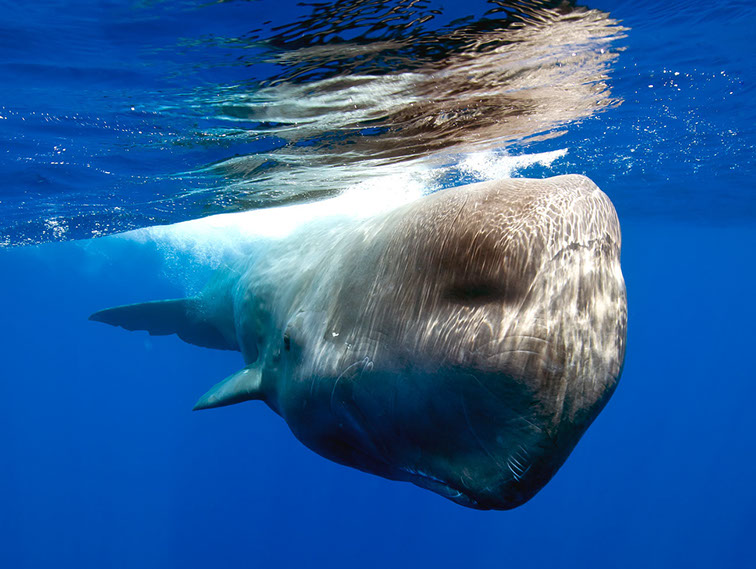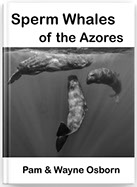Whales, Wildlife & Wilderness Pam & Wayne Osborn
Sperm Whales

Sperm Whales of the Azores
The cachalot or sperm whale, Physeter macrocephalus has captured the imagination of those who ply the sea over many centuries. In medieval times, whales were viewed as deep sea monsters of unquestionable malicious intent.
In 1820 an enormous sperm whale rammed and sank the Nantucket whaleship Essex. Whilst the attack was not without provocation, it became fodder for Herman Melville's classic novel, Moby Dick. Much of the sperm whale's maligned reputation stems from the sinking of the Essex and the novel Moby Dick.
In reality, the sperm whale is more of a gentle giant. Unfortunately their unsuspicious nature meant they were easy to hunt and kill. That is not to say whaling was not dangerous. Coastal whaling in the Azores was never mechanised - the harpoon was hand thrown from open whaleboats. Whaling ceased in 1987 and a resident sperm whale population has survived.
The Azores is a remote archipelago of nine volcanic islands at 38 degrees north on the mid-Atlantic ridge. We first visited the Azores in 2005 and have returned 5 times.
A permit is required to enter the water to photograph the whales and this is strictly enforced.
